In my last blog post, I listed nine potentially serious defects to look out for in your new property. Here I’ve increased my list to eighteen!
10. Chimney Breasts
When chimney breasts are removed then the remaining section of chimney breast above needs to be supported properly. If you can’t see any evidence of a beam then it may not be supported and it’s worth asking the owner.
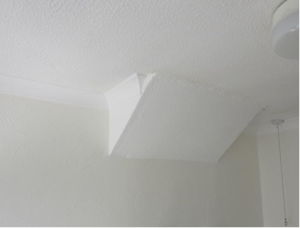
Chimney breast removed
11. Windows
Don’t be shy about opening windows – we won’t! Windows are often stiff and need new hinges and occasionally will come right off their hinges so best to always ask the owner first. Have a look at the wall underneath to see if there is any sign of the window leaking.
Older style sash windows need regular maintenance. You should check which ones open and take a look at the sash cords to see if they are worn.
Modern uPVC casements are vulnerable to misting. The seal to the double glazed unit can fail allowing condensation to become trapped between the two pieces of glass. There is no remedy for this other than replacing the sealed unit.
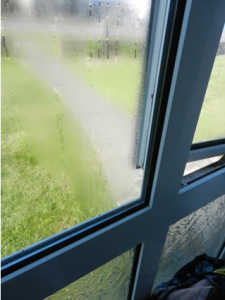
Misted sealed glazed unit will need renewal.
12. Dampness
Dampness could be rising damp, penetrating damp or condensation. Try to see if there are any tell tale signs – but it can take an expert eye to differentiate between them.
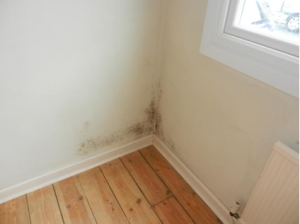
Mould is often due to condensation
13. Timber Decay
Check the condition of visible timber and note the surface texture. If it has a crinkled surface then decay may be beneath. If paintwork is flaking see if the wood behind is visible; cuboidal cracking is a tell tale sign of timber decay.
- Cuboidal cracking from decay is clearly visible beneath the paintwork
- Dry rot is present beneath this crinkly paint surface
14. Woodworm
The first sign of beetle attack is exit holes on the surface of the timber.
Wood boring beetles thrive in warm damp areas so it is advisable to look closely in understairs cupboards, on stairs down to basements and other such places where the timber is usually exposed.
15. Electrical Installation
Locate the consumer unit and determine its age. Modern units will have circuit breakers rather than old style fuses or fuse wire.
A modern consumer unit does not necessarily mean that the property has been re-wired. Look at the number of sockets; are there a sufficient number for modern use and where are they positioned? It is not permitted to put sockets in the skirting board in a modern installation.
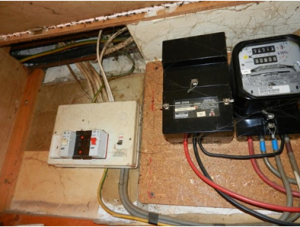
Old fuses are not as safe as modern micro circuit breakers.
16. Water
Look out for old lead pipes as due to their age they will need replacing. Run the water and see if it has a good flow.
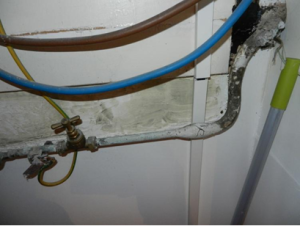
This old lead water main on the right of the photograph has a typical bulbous joint where it connects to copper.
17. Loft Conversions
There are many loft conversions that are only suitable for storage and not for use as a bedroom or study. Badly done, they can cause serious damage to the building. If a loft conversion is for sleeping accommodation it should be closed off with a partition and there should be an escape route out to the front door. Bounce up on and down on your heels a couple of times to test if a new floor was installed or if the first floor ceiling joists have been used.
Your solicitor should always request a Building Regulations completion certificate for loft conversions but these checks may save you the time and money involved in going that far.
18. Gardens and Boundaries
These areas are often overlooked but repairs to boundary walls, fences, steps and pavings can be costly.
See if walls appear upright because leaning walls can require expensive strengthening or rebuilding. If the wall looks old and fragile it may wobble with slight hand pressure – always a concern.
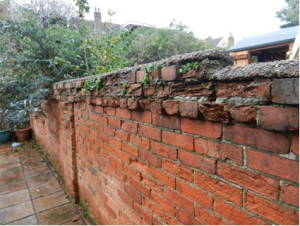

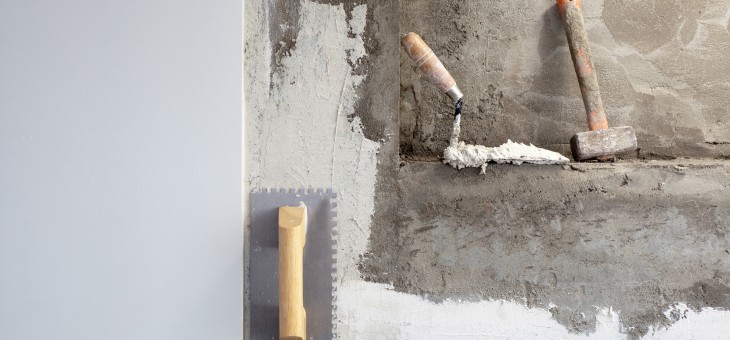
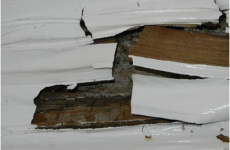
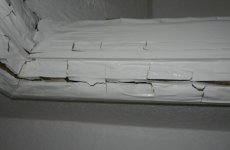
Comments are closed.